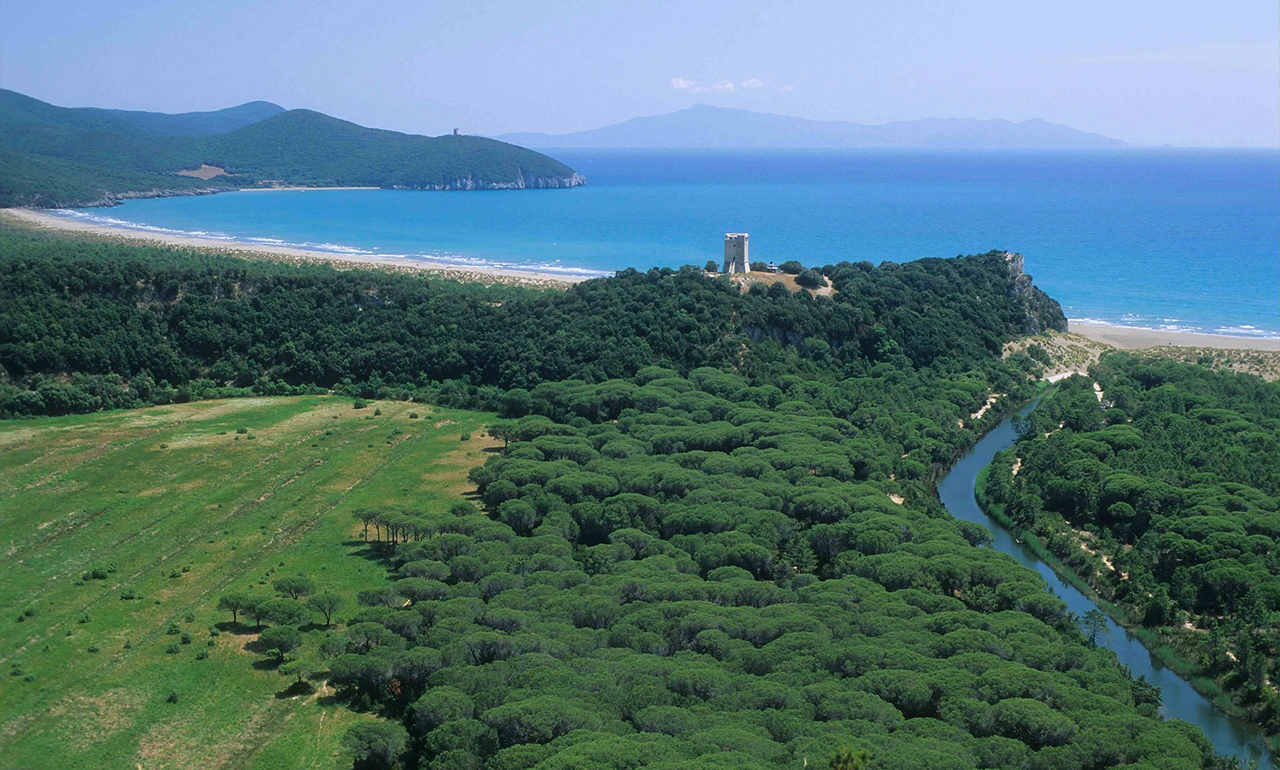Staying at L’Andana, our splendid Hotel in Castiglione della Pescaia, you can take advantage of a privileged position with regards to the most important cities of art in Tuscany, such as Florence (150 km), Siena (80 km) and Arezzo (150 km), as well as the Capital itself, which is only 180 km away. Even closer and no less rich in artistic value is the nearby hamlet of Castiglione della Pescaia and the Provincial capital of Grosseto, (20 km). Castiglione della Pescaia still preserves many signs of its past, including the imposing walls surrounding the old town centre, and the Rocca, an ancient Aragon castle with square towers providing magnificent views all along the coast. The ancient episcopal see of Grosseto was at the height of its splendour in the latter half of the 16th century, when the Medici built a huge wall around the town, most of which still stands today. There are numerous places of interest to see, including the Cathedral of San Lorenzo, the Provincial Palace, the Church of San Francesco, and the Archaeological Museum, considered one of the most important in Italy. It contains thousands of relics and works of art unearthed at numerous archaeological sites and in Etruscan and Roman cities in the province of Grosseto, especially during excavation work at nearby Roselle. Numerous towns in the Maremma display their ancient heritage; there is something to suit all possible tastes in terms of art, culture or history. Tenuta La Badiola itself is a historic site as the 500-hectare estate once held an entire village, with farms and craft workshops. It was formerly the summer residence of Grand Duke Leopold II of Lorraine, who is famous for having launched the greatest project for reclaiming the Maremma, which became fertile and inhabitable. History is never far away in the Maremma. Places such as Vetulonia and Roselle are veritable open-air archaeological sites. Dubbed the Etruscan Pompeii, Roselle still contains major structures bearing witness to its urban layout in Etruscan, Roman and Medieval times. Driving along the back road from Manciano to Pitigliano, Sovana and Sorano is like taking a step back in history. These small towns are perched high up on sheer tuff rocks, in which the Etruscans dug tunnels, paths, cellars, caves and tombs. The houses can be identified by the noble families’ coat-of-arms and most date back to medieval times when the Aldobrandeschi and Orsini signorias were in power. All these towns contain constructions of immense historic interest, ranging from pre-historic to Etruscan, Roman and medieval times, up until their renaissance in the 18th and 19th century under the rule of the Lorraine family. And L’Andana has its own story to tell.
What to see in Tuscany between art and culture
Hotel a Castiglione della Pescaia: the best cities of art nearby
NATURE
The Natural Park of Maremma, at one time an area of salty swamplands, is now one of the most fertile areas of Tuscany, with its pastures and its extensive woodlands, olive groves and vineyards.



